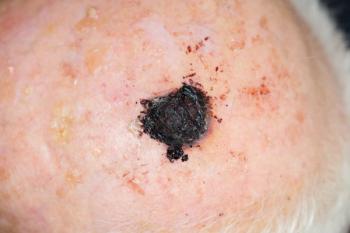
Empowered Aging and the Rise of Confidence-Based Care with Shannon Humphrey, MD, and Merz Aesthetics
Key Takeaways
- Aesthetic dermatology is evolving towards patient-centered care, focusing on empowered aging and self-care rather than societal beauty standards.
- Merz Aesthetics' study shows most patients seek aesthetic treatments for internal reflection, with minimal societal pressure.
Shannon Humphrey, MD, leads a shift in aesthetic dermatology towards patient empowerment and self-care, supported by Merz Aesthetics' Pillars of Confidence study.
The landscape of aesthetic dermatology is undergoing a transformative shift from a focus on surface-level enhancements to a more profound, patient-centered vision of empowered aging and self-care. At the forefront of this evolution is Shannon Humphrey, MD, a cosmetic dermatologist based in Vancouver, Canada, and clinical associate professor at the University of British Columbia’s Department of Dermatology and Skin Science.
With over 15 years of experience promoting a 360-degree approach to dermatological care, Humphrey is now supported by a large-scale global study from Merz Aesthetics that validates what she has long practiced: aesthetic treatments are not merely cosmetic. They are confidence-boosting, wellness-affirming acts of self-investment.
In a recent interview with Dermatology Times, Humphrey shared her insights on how data from
A New Era in Anti-Aging and Aesthetic Procedures
Humphrey describes the findings of the Pillars of Confidence study as both validating and revelatory. Contrary to past assumptions that aesthetic procedures are primarily driven by societal pressure or vanity, the data reveals that a growing number of patients, across cultures and geographies, view these treatments as part of a broader wellness routine. About 69% of respondents now seek aesthetic treatments to reflect how they feel on the inside.1 Humphrey says that this isn’t new. Rather, the industry is using new language to describe it. Terms like “graceful aging” or “confident aging” are inspiring patients to feel like the best versions of themselves by practicing self-care rather than chasing unrealistic beauty standards.
Shannon Humphrey, MD, on patients wanting to feel like the best versions of themselves through aesthetic treatments.
Merz’s global study surveyed 15,000 adult patients aged 21 to 75 years across 15 countries, including regions in North America, Latin America, Europe, the Middle East, and Asia-Pacific.1 Participants either had undergone aesthetic treatments in the past or expressed openness to future procedures. One of the most striking statistics from the data was that only 26% of respondents felt pressure to conform to society’s beauty ideals—a number Dr. Humphrey expected to be much higher. Instead, respondents cited the influence of close friends, family, and healthcare providers as more significant in shaping their self-perception.
“There's a movement towards agency and empowerment in the aging process, reconnecting with people in this digital age and being more influenced by our tribe than by these external forces,” Humphrey said. “And I think this data point kind of highlights all of those subtle nuances. Ultimately, it's a really positive thing that there isn't a greater perception of adherence or influence by beauty norms.”
Elevating Clinical Practice Through Empathy and Insight
This shift in patient motivation presents both an opportunity and a responsibility for dermatologists, according to Humphrey. She advised clinicians to analyze their own practice style and ensure that it honors aesthetic procedures as an act of wellness and self-care, rather than a transactional model. A key component of this transformation is the consultation itself. Humphrey emphasized the importance of allocating enough time to explore patients' motivations and psychological readiness for treatment. Asking open-ended questions and utilizing active listening skills will help professionals better understand the patient’s goals.
Shannon Humphrey, MD, on how clinicians can initiate conversations with patients and better understand their motivations for receiving aesthetic care.
Such reflective conversations help distinguish between patients seeking to enhance their confidence and those who may be motivated by insecurity or unrealistic expectations, which could be potential red flags for issues like body dysmorphic disorder or perception drift. This 360-degree care model, which Humphrey has been implementing for years, creates a long-term treatment plan rooted in stability and self-worth.
Developing Personalized, Patient-Centric Aging Plans
According to Humphrey, the next frontier in aesthetic dermatology is the widespread adoption of personalized aging plans: comprehensive strategies that map out a patient’s journey over months or years. Rather than offering a single procedure, dermatologists should provide patients with an ongoing plan for skin health and aesthetic maintenance. This builds trust and ensures the treatments evolve with the patient’s needs and goals.
“There’s a real shift away from one-and-done dramatic interventions toward treatments that support healthy, graceful aging,” Humphrey said. She noted that regenerative aesthetics will play a crucial role in this. Regenerative procedures aim not just to enhance appearance, but to optimize tissue health and behavior, thus helping skin and soft tissue act younger for longer.
A Bright Future for Patient Self-Care Through Aesthetics
Humphrey is optimistic about the future of the field, as patients are now viewing their procedures as acts of beauty maintenance and self-care. The Pillars of Confidence data confirms what she and many of her colleagues have intuited. About 74% of respondents said that after getting aesthetic treatments, they feel compelled to expand their self-care routine and prioritize it, while 73% said that they feel more energized and fulfilled after receiving aesthetic treatments.1
Shannon Humphrey, MD, on the significance of Merz Aesthetics' Pillars of Confidence Study.
As the aesthetics industry continues to grow, Humphrey encourages her peers to align their practices with this patient-first mindset, which will build long-term, trust-filled partnerships. As the Pillars of Confidence data demonstrates, patients are increasingly empowered, self-directed, and seeking authenticity in their aesthetic care, and according to Humphrey, it is the duty of clinicians to support them on their self-care journeys through dermatology.
“I believe we'll see the paradigm of care evolve to be aligned with these new observations,” Humphrey concluded. “I think we'll continue to see an emphasis on natural-looking outcomes. So, the pendulum has swung far away from these dramatic, overdone results towards a more qualitative outcome of healthy, vital, refreshed, [and] rested. To me, that is a trend that I welcome.”
Reference
1. Pillars of Confidence: Global Insights on Aesthetics and Self Affirmation. Merz Aesthetics. 2025. Accessed May 29, 2025.
Newsletter
Like what you’re reading? Subscribe to Dermatology Times for weekly updates on therapies, innovations, and real-world practice tips.


















